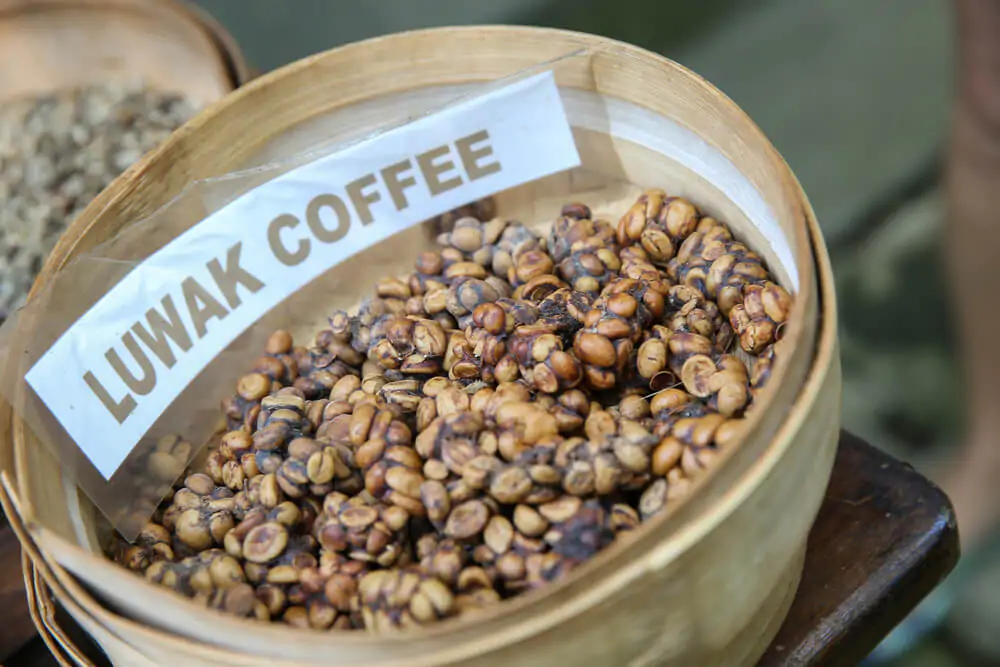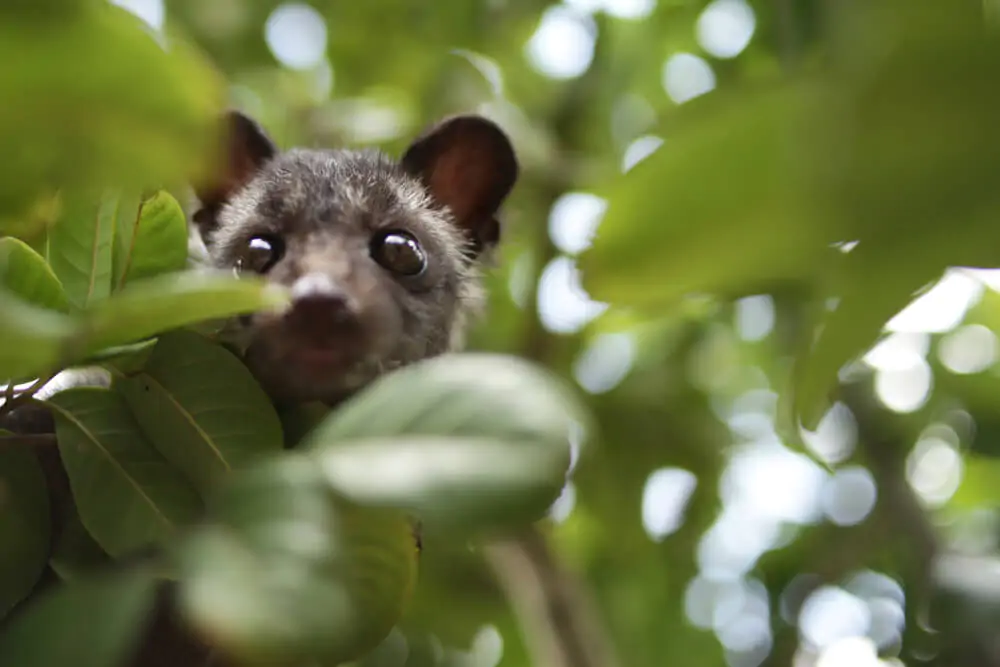What is Luwak coffee? Luwak coffee is a blend made of partially digested coffee. Expensive, sought after, and adventurous, it is a unique brew enjoyed by many people across the world.

Kopi Luwak is a type of coffee made from the partly digested coffee fruit eaten by the Indonesian palm civet. This animal is a cat-like animal, and the coffee it produces has gained a reputation for being one of the world’s most sought-after and expensive types of coffee.
Whether you are feeling adventurous and want to try something new or have some extra money to spend on some of the most pricey coffee in the world, understanding its origins will give you a new appreciation for the unique beverage trend.
Inside The Kopi Luwak Production Process
Kopi Luwak coffee is usually created by harvesting the excrement of the Asian palm civet animal. This excrement is usually left undigested and contains the coffee beans that makeup Luwak coffee. The palm civet, which lives in the trees, will release droppings that fall to the ground and begin to dry, making them easy to collect.
Once the beans are removed from the collected excrement, they are washed to get rid of the first bacteria layer on them. Then, they go through a second washing process before being taken out of their protective shells.

After the Luwak coffee beans are taken out of their outer shells, they need to be dried. Luwak coffee is dried in the sun in Indonesia, usually in the summertime outside of the monsoon season. Since the weather conditions in Indonesia tend to be humid and rainy most other times of the year, summer is the only harvesting, washing, drying, and roasting period for Luwak coffee beans in that region.
How to Make Luwak Coffee
The best way to make and drink Luwak coffee is to grind it using a coffee grinder and brew it just like you would brew any other type of coffee bean. Make sure, however, to grind into a medium-fine consistency so that the water does not drain too much of its tart and rich flavor if you’re using a traditional drip coffee pot. To make Luwak coffees, consider using a high-quality version of any of the following coffee makers:
- Chemex
- Traditional electric coffee pot
- French press (use a coarse grind)
- Aeropress
- Boil and strain over the stove
Once your coffee is brewed using fresh spring or filtered water, simply pour it into your cup. While it is usually drunk black to maintain its purity of flavor, you can add milk or sugar as needed.
You might also be interested in our explainer on can you put Yakult in coffee.
Luwak Coffee and Palm Civets
Luwak coffee owes its existence to palm civets, their natural host. Since Kopi Luwak coffee is based around the ingestion and digestion of Asian palm civets, it is important to comprehend the habits of the animal itself. Often compared to cats, marmots, lemurs, possums, and even Asian monkeys, palm civets are actually unique to their region.

They are soft and fluffy with lengthy dark tails and strong back legs, allowing them to jump and climb high in order to eat the plants that contain the coffee beans. Though they might appear large, most Asian palm civets are light and only weigh around 12 total pounds max during their adulthood. To put it in perspective, this is about the weight of a small adult housecat.
The History of Kopi Luwak Coffee
Originating in the 19th century, Luwak coffee is the third coffee to come out of the Sumatra and Java coffee regions. Luwak coffee was introduced to the Dutch colonies after Arabica coffee, which also became popularized as a harvest cash crop from the Arabian Peninsula.
Since the colonists wanted to increase the amount of money they could get from the Arabian Peninsula, they decided to invest in Luwak coffee and added this coffee made from palm civet feces to their list of regular coffee bean shipments.
As soon as the ‘strange and exotic’ Luwak coffee found its way by ship to Europe, it was considered a very fashionable drink to be consumed by the wealthy elite of the time. Today, Luwak coffee is highly controversial. This is due to the often poor treatment of the palm civets, who eat the coffee cherries.

Some palm civets are kept in cages and released only when it is time to collect their excrement containing the coffee beans. Despite this known fact, consumers continue to crave Luwak coffee and there are even coffee shops across the United States that carry the expensive treat.
If you liked this article check out Best Coffee To Drink Black – Our Top Picks For 2022.
